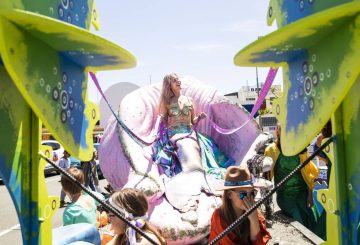웰링턴의 6개 학교 학생들이 의회를 방문하여 정부에 무료 학교 급식 프로그램을 축소하거나 변경하지 말 것을 요청했습니다.데이비드 시모어 (David Seymour) 부교육부 장관은 이 프로그램이 가장 필요한 학생들에게 최대한의 혜택을 제공하고 비용 대비 가치를 제공하는 방식으로 계속될 것이라고 밝혔습니다.
타이타 칼리지, 비숍 비아드 칼리지, 포리루아 칼리지, 나에나에 칼리지, 아라쿠라 스쿨, 나티 토아 스쿨의 학생들은 노동당, 녹색당, 테파티마오리 출신 의원들을 만났다.그들은 카 아코 카 오라 (Ka Aco Ka Ora) 프로그램에 대해 논의하고 의원들과 점심을 함께 나누었다.학생들은 이 프로그램을 통해 출석률이 향상되고 학생, 학부모, 교사들의 부담이 줄어들었다고 설명했습니다.
비숍 비아드 칼리지 (Bishop Viard College) 의 헨리 타누바사 (Henry Tanuvasa) 는 이 프로그램을 통해 부모들이 매일 아이들을 위해 점심을 사줄 필요가 없기 때문에 학부모들이 돈을 절약할 수 있다고 지적했습니다.타이타 컬리지의 10학년 학생인 말라치 이아페타 (Malachi Iafeta) 는 식사를 통해 학생들의 복지와 출석률이 향상되었다고 말했습니다.그는 음식 덕분에 일부 학생들이 학교에 다니며 학업에 집중할 수 있게 되었다고 말했습니다.
학생들은 아오테아로아 보건연합의 지원을 받았으며, 아오테아로아는 노동당 교육 대변인 얀 티네티에게 청원서를 제출했다.연합의 공동 의장인 리사 테 모렝가 (Lisa te Moreng) 교수는 정부가 출석률을 향상시킨 프로그램의 삭감을 고려하면서 출석률 목표를 설정하는 것은 이치에 맞지 않다고 주장했다.
노동당은 정부가 이 프로그램에 전액 자금을 지원할 것을 촉구하는 자체 청원서를 가지고 있습니다.노동당 지도자 크리스 힙킨스 (Chris Hipkins) 는 비용을 절감하면서 프로그램을 지속할 수 있는 유일한 방법은 프로그램을 받는 학생 수를 줄이거나 음식의 질을 낮추는 것이라고 말했습니다.
시모어 의장은 아직 내각에서 논의 중이기 때문에 어떤 변화가 있을지 추측하기에는 너무 이르다고 답했습니다.그는 이전 정부가 올해 이후에도 이 프로그램에 자금을 지원하지 않았다고 비난했습니다.Seymour는 또한 이 프로그램을 통해 출석률이 소폭 증가했을 뿐이며, 오로지 점심 자금 지원을 통해서만 정부 출석 목표를 달성하려면 수십억 달러의 비용이 들 수 있다고 지적했습니다.





























































